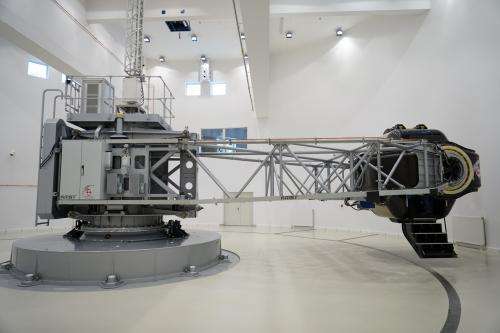Image: Polish human centrifuge

How do you prepare for the unique experience of weightlessness on a parabolic aircraft flight? An ESA-led team took a ride on this human centrifuge at Poland's Military Institute of Aviation Medicine.
The quartet, including ESA mechatronics engineer Kjetil Wormnes, plan to test a deployable net for the capture of derelict satellites.
The centrifuge training on 27–28 January prepared them for this week's flight on a Falcon 20 from the National Research Council of Canada.
"The idea was to acclimatise us to the gravity shifting we'll experience, to help us anticipate and hopefully avoid any motion sickness," explains Kjetil.
"This is done to reduce the risk of any problems affecting the experiment. Compared to the Novespace Airbus A300 that ESA normally uses for its parabolic flights, this is a smaller aircraft with no room for extra helpers, so we want everyone to be fit to ensure everything runs smoothly. An indisposed crewmember could be catastrophic."
Of course, a centrifuge is not the same as a zero-g flight. For example, zero acceleration is only along a single axis and the spin is an additional source of motion sickness.
This Polish centrifuge is rare in that it has an active gondola which can rotate independently. This enables the creation of not only positive g-forces, but also negative (by tipping it upside down) or zero.
Inside there is a full F16 cockipit and flight simulator for training pilots from all over Europe. But the test team experienced a simple programmed acceleration cycle simulating the full set of 25 aircraft parabolas.
"The transitions between the different phases, and in particular from 0 to 2 g was the worst part," Kjetil reports. "This was the time when the boogie flipped upside down while the centrifuge was still rotating.
"The other bad time was just as the centrifuge braked to stop. For the rest, it was no problem, so long as I didn't move my head."
Kjetil was joined by team members from Italy's STAM company and Poland's OptiNav and SKA Polska companies, working on a net design being considered for inclusion in ESA's eDeorbit mission, designed to capture and deorbit large items of space debris as part of the Agency's Clean Space initiative.
SKA Polska arranged this week's parabolic flight as part of their contract to develop and test the net design.
Provided by European Space Agency

















